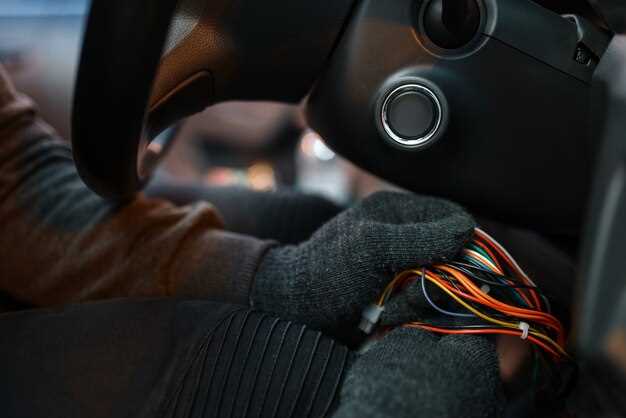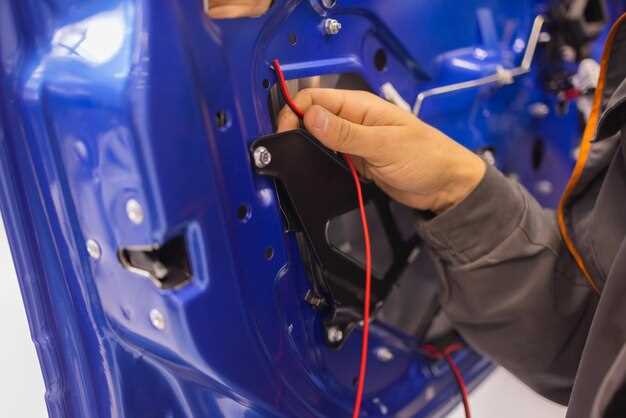
Understanding the condition of your car’s wiring system is crucial for maintaining the overall health of your vehicle. Car wiring plays a significant role in the operation of various electrical components, from the headlights to the ignition system. Over time, exposure to heat, moisture, and physical wear can lead to deterioration, making it essential to recognize the signs that indicate a need for replacement.
One of the most common signs of faulty car wiring is the inconsistent operation of electrical systems. If you find that your headlights flicker or your dashboard lights behave erratically, it may suggest that the wiring is compromised. Additionally, unexpected electrical failures, such as non-functional power windows or malfunctions in the audio system, can often trace back to wiring issues. Addressing these problems promptly can prevent further damage and enhance safety on the road.
The timing for replacing car wiring is not only dependent on visible signs but also on the age and condition of your vehicle. If your car has reached a certain age or has endured significant wear and tear, it may be wise to have the wiring inspected regularly. Preventive maintenance can mitigate potential hazards and ensure that your car remains reliable for years to come. Understanding when to act is key to effective vehicle management and safety.
Identifying Common Symptoms of Faulty Car Wiring

Recognizing the signs of faulty car wiring is crucial for maintaining vehicle safety and performance. One of the most common symptoms is the presence of flickering or dimming lights. If your headlights, dashboard lights, or interior lighting suddenly become inconsistent, it may indicate a wiring issue.
Another warning sign is frequent blown fuses. If you find yourself replacing fuses more often than usual, there could be a short circuit or damaged wire that necessitates replacement.
Electrical burns or melting insulation are also clear indicators of wiring problems. Inspect any visible wires for signs of scorching or melted areas, which are serious risks and should be addressed immediately.
Inconsistent behavior of electrical components can also point to faulty wiring. If power windows, locks, or other electronic features work sporadically, it’s often a sign of wiring damage within your car’s electrical system.
Lastly, unusual smells, such as burning plastic or rubber, can indicate overheating wires. This symptom should never be ignored, as it poses a fire hazard and calls for immediate attention.
Understanding When to Seek Professional Help for Wiring Issues
Identifying wiring issues in your vehicle can be challenging, and knowing when to seek professional help is crucial for ensuring safety and reliability. If you notice signs such as flickering lights, unusual noises when starting your vehicle, or a recurring problem with the electrical system, these may indicate that your car’s wiring requires professional assessment.
Additionally, if you experience problems with the battery dying frequently or find that electronic components, such as the radio or navigation system, are malfunctioning, it might suggest that the wiring is compromised. Damage from wear and tear, such as frayed wires or corrosion due to moisture, can be concerning and often necessitates replacement by a qualified technician.
Attempting to handle complex wiring issues without proper expertise can lead to further complications or even personal injury. If you feel uncertain about diagnosing the problem or lack the tools required for inspection, it is advisable to contact a professional. A trained technician can accurately identify wiring faults and recommend appropriate repair or replacement services.
Another indicator that professional help is needed is the presence of dashboard warning lights related to electrical systems. Ignoring these alerts can lead to larger issues down the road. Overall, trusting a skilled expert to address wiring concerns can save you time, money, and enhance your vehicle’s longevity.
Steps to Prepare for a Successful Wiring Replacement

Replacing the wiring in your vehicle is a critical task that requires careful planning and execution. Follow these steps to ensure a successful wiring replacement.
1. Gather Necessary Tools and Materials: Before beginning the replacement process, compile all required tools such as wire strippers, crimpers, and a multimeter. Additionally, collect replacement wiring, connectors, and electrical tape. Having everything ready will streamline the procedure.
2. Disconnect the Battery: For safety, always disconnect the negative terminal of the battery before starting any electrical work. This will prevent electrical shorts and possible shocks while handling the wiring.
3. Document Existing Wiring: Take photos or create diagrams of the current wiring layout. This documentation will serve as a reference when installing the new wiring, ensuring correct connections and placements.
4. Identify the Wiring Issues: Thoroughly inspect the existing wiring for signs of wear, fraying, or corrosion. Understanding the specific problems will help you determine the scope of replacement needed and avoid unnecessary work.
5. Purchase Quality Replacement Parts: Invest in high-quality wiring and connectors. Cheaper alternatives may save money initially but can lead to further issues down the road, such as poor conductivity or premature failure.
6. Prepare the Vehicle: Clear out any obstacles surrounding the wiring area. This may include removing panels, seats, or other components to gain better access to the wiring. A clean workspace will allow for a more efficient replacement process.
7. Safety Precautions: While working on the wiring, wear safety goggles and gloves to protect yourself from debris and sharp objects. Follow all safety protocols to minimize risks during the replacement.
8. Test Before Finalizing: After completing the wiring replacement, reconnect the battery and perform tests to ensure everything operates correctly. Make sure all connections are secure and functioning as intended before reassembling any removed components.
By carefully preparing for a wiring replacement, you enhance your chances of achieving a successful outcome and ensuring your vehicle’s electrical system functions properly.




